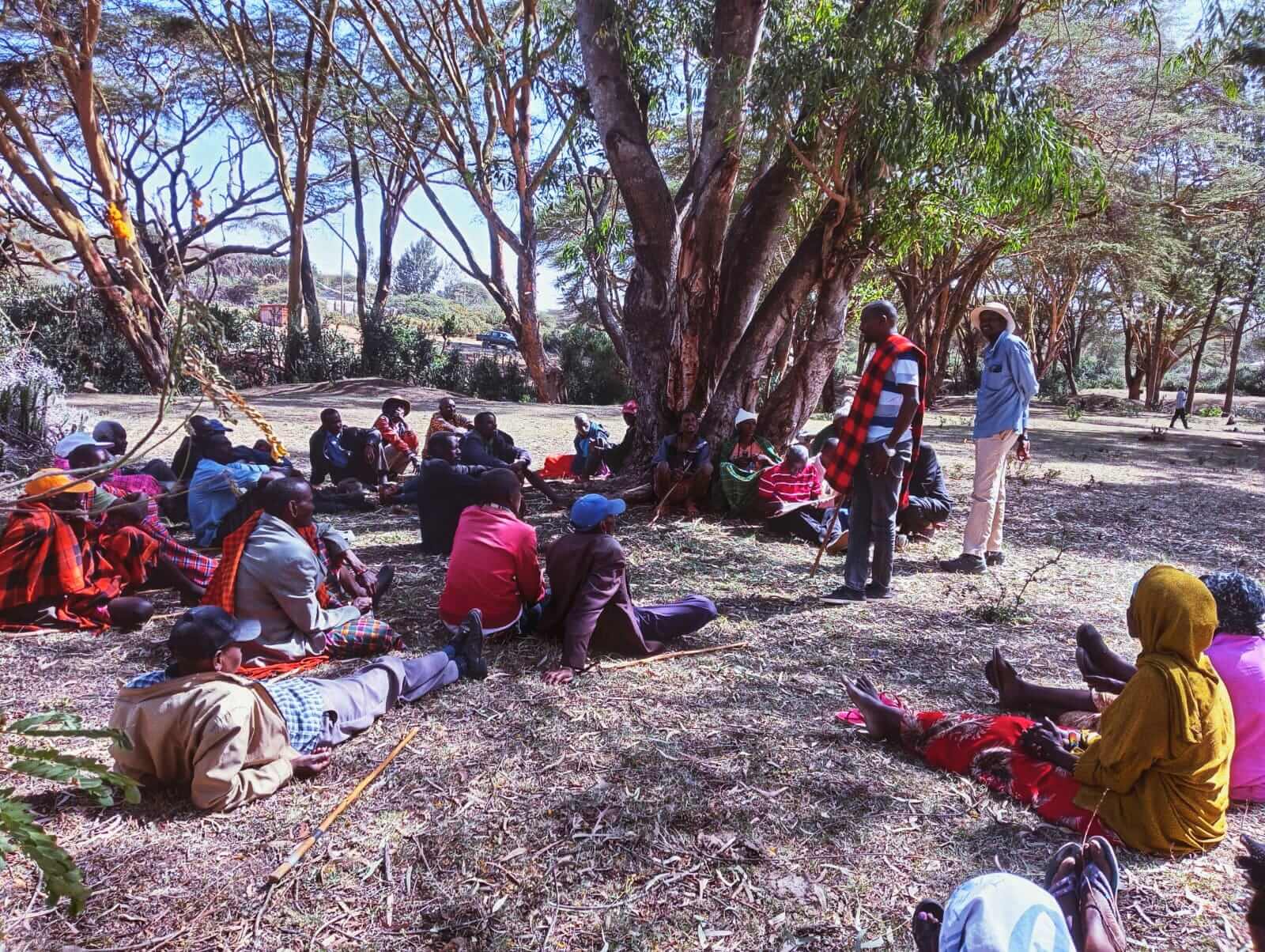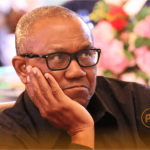Parsanka Sayianka grew up in Kenya’s Maa community, where female genital mutilation or FGM was the norm.
In his village of Paranai in Kajiado County, it was customary for girls to drop out of primary school after undergoing “the cut”, which is sometimes erroneously referred to as circumcision. These girls would soon be married off in exchange for cows, mostly to older men.
“I kept wondering why this had to happen to our girls while their mates from other communities remained in school. I saw how the practice and early marriage denied girls opportunities to explore their full potential. I also saw the cycle of poverty that followed them,” said Sayianka, now an anti-FGM activist.
Leading the charge for attitude change
Sayianka also saw the despair among girls in their preteens who were aware that the clock was ticking and it was just a matter of time before they would be married off.
He, therefore, decided to change the narrative by breaking tradition and marrying a woman who hadn’t been subjected to FGM. During the wedding negotiations, he came face to face with the hidden hand of men in the propagation of FGM.
“When I introduced my fiancée to my family, she was easily accepted, but my father and her father called me aside and ‘reminded’ me that she had to undergo the cut before we could get married, to which I vehemently refused. Her father told me he was willing to forfeit the dowry if only I’d allow him to uphold this tradition,” said Sayianka.
During the negotiation process, it dawned on him that as long as men continued to demand circumcised girls for brides, the practice would never end.
Though Sayianka’s father and father-in-law later agreed to let the young couple be – albeit half-heartedly – Sayianka took it upon himself to hold community dialogues with men to sensitise them on the horrors of FGM.
With this experience and conviction, Sayianka tossed himself into uncharted waters of activism – and he hasn’t looked back since. Currently, he’s the programs director at Progressive Cultures, a community-based organisation leading the war against FGM.
He says his preferred platform for discussion is under a community tree, a space where culture is passed from generation to generation. He holds these talks three to five times monthly and works with other organisations championing the exact cause.
“I have held community dialogues with more than 20,000 men from Kajiado, Narok, Samburu, Pokot and other hot spot counties, and the impact over time is commendable. In such forums, we engage freely and attitudes and beliefs are changed because men listen to men”, Parsanka explained.
initial setback
His journey has not been devoid of challenges. At first, men were suspicious of his ‘obsession’ with the issue of female genitalia, but the suspicion waned with time.
“The men who support FGM do so purely to uphold culture, and they are ignorant of the effects of the practice. But once they’re made aware, they see the need to abandon the culture. If men had been sensitised early, I believe FGM would have been eradicated by now,” Parsanka explained.
The World Health Organization describes FGM as all procedures that involve partially or totally removing the external female genitalia or other injuries to the same organ for non-medical reasons.
The practice often results in complications such as injury to surrounding tissue, infections, and fever, as the procedures are mostly performed under unhygienic conditions. It can also lead to severe bleeding, shock and even death.
Long-term complications range from pain while passing urine to prolonged labour during childbirth that could lead to excessive bleeding, obstetric fistula and even death. And his knowledge of these grave consequences further pushed Sayianka to take action.
“When I saw this year’s theme on ending FGM was ‘Partnership with men and boys to transform social and gender norms to end FGM’, I reckoned that the world was finally beginning to get it,” said Sayianka.
“The time has come for us to negotiate with ‘Pharaoh’ himself. Our communities are largely patriarchal, and we must involve men in these discussions to see tangible results.”
Ignorance, he argues, is the greatest contributor to the propagation of the practice, as most interventions have focused on sensitising women and girls while leaving men and boys out.
“When you sensitise men about the importance of this precious organ (the clitoris) in their own sensual pleasure, it makes all the difference. I tell them that even if the days are tough, at least they can be assured of sweeter nights,” he said.
He has mentored many men, some of whom have joined the clarion call and become anti-FGM crusaders in their social spaces.
Doctor Kireki Omanwa, President of the Kenya Obstetrical and Gynaecological Society, points to the deep roots of FGM in local culture as a reason why it has been difficult to eradicate.
“The practice is performed to deprive girls and women of sensual feelings, especially during intercourse. The communities believe this prevents them from being promiscuous and ensures fidelity to their spouses,” said Omanwa.
However, with efforts including those of Sayianka, the Kenya Demographic Health Survey of 2022 shows that the prevalence of FGM dropped to 15% from 23% four years ago.
Kenya’s anti-FGM board Programs Director, Nyerere Kutwa, attributed the success to the multi-sectoral approaches adopted to combat the vice, key among them involving men and boys.
“For a long time, men looked at FGM as a women’s issue, but we’re gradually making them realise they have a big role to play as they are the custodians of culture right from the household level,” Kutwa explained.
He has also observed a mutation in the practice where some parents take their children to health practitioners to perform the cut in what’s popularly referred to as medicalised FGM.
“In addition, cross-border FGM is also an issue, especially with communities living along porous borders which take their girls to neighbouring countries, namely Ethiopia, Somalia, Tanzania and Uganda, to undergo the cut,” he said.
Kutwa, however, says the board is working with the Ministry of Health to curb the practice and have perpetrators brought to book, adding that irrespective of how it’s performed, FGM remains illegal and a violation of human rights.
They are also working with community leaders to implement the regional cross-border FGM plan that pressures the five countries to uphold commitments to eradicating the practice.
The board, which works closely with the Office of the Director of Public Prosecution to ensure justice is served for victims of FGM, has also developed guidelines and handbooks encouraging communities that practice FGM to explore alternative rites of passage that are harmless.
bird story agency
Parsanka Sayianka, from Kenya's Maa community, grew up witnessing the pervasive practice of female genital mutilation (FGM). Troubled by how FGM and early marriages hindered girls' education and perpetuated poverty, Sayianka chose to defy tradition by marrying a woman who had not undergone FGM. His refusal to follow cultural norms during his wedding negotiations highlighted the role of men in perpetuating the practice.
Driven by his experiences, Sayianka became an anti-FGM activist, focusing on sensitizing men about the harmful effects of FGM. He conducts community dialogues, particularly with men, to change attitudes and beliefs about the practice. As the programs director at Progressive Cultures, Sayianka's efforts have reached over 20,000 men, leading to significant shifts in perceptions of FGM.
Despite initial skepticism and challenges, Sayianka persists, emphasizing that ignorance fuels the continuation of FGM and that men play a crucial role in eradicating it. His work is supported by broader efforts, including those of Kenya's anti-FGM board, which engages men and boys and collaborates across sectors to combat FGM. The Kenya Demographic Health Survey of 2022 shows a decline in FGM prevalence, indicating the positive impact of these collective actions.
The anti-FGM board also addresses issues like medicalized FGM and cross-border practices, working with community leaders and governments to uphold commitments to end FGM. The board collaborates with legal authorities to ensure justice for victims and promotes alternative rites of passage that do not harm girls.






